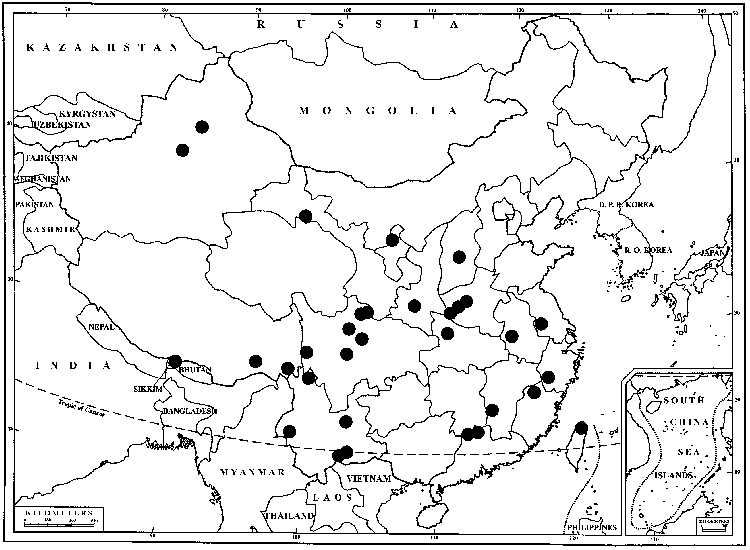Difference between revisions of "Tortella tortuosa"
Laubm. Deutschl. 1: 604. 1888,.
FNA>Volume Importer |
imported>Volume Importer |
||
| (3 intermediate revisions by 2 users not shown) | |||
| Line 9: | Line 9: | ||
|name=Tortula tortuosa | |name=Tortula tortuosa | ||
|authority=Hedwig | |authority=Hedwig | ||
| + | |rank=species | ||
|publication_title=Sp. Musc. Frond., | |publication_title=Sp. Musc. Frond., | ||
|publication_place=124. 1801 | |publication_place=124. 1801 | ||
| Line 55: | Line 56: | ||
-->{{#Taxon: | -->{{#Taxon: | ||
name=Tortella tortuosa | name=Tortella tortuosa | ||
| − | |||
|authority=(Hedwig) Limpricht | |authority=(Hedwig) Limpricht | ||
|rank=species | |rank=species | ||
| Line 67: | Line 67: | ||
|publication year= | |publication year= | ||
|special status= | |special status= | ||
| − | |source xml=https:// | + | |source xml=https://bitbucket.org/aafc-mbb/fna-data-curation/src/2e0870ddd59836b60bcf96646a41e87ea5a5943a/coarse_grained_fna_xml/V27/V27_725.xml |
|subfamily=Pottiaceae subfam. Trichostomoideae | |subfamily=Pottiaceae subfam. Trichostomoideae | ||
|genus=Tortella | |genus=Tortella | ||
Latest revision as of 21:28, 5 November 2020
Plants dull, green, yellow-green or yellow-brown distally, brown proximally, becoming reddish at higher latitudes and altitudes, elongate. Stems 1–6 cm, leaves distantly disposed along the stem with the shining leaf bases usually apparent, central strand nearly always absent, rarely present, sclerodermis moderately developed, 2–3(–4) cells deep, cells of the central cylinder rather thick-walled, stems visibly tomentose with dense red-brown radicles, rarely nearly eradiculose in very small stems. Stem leaves rather soft, uniform in size, strongly crisped or contorted with spirally curled tips when dry, flexuose- to widespreading when moist, long-lanceolate to linear-lanceolate, broadly to narrowly concave or nearly plane proximally to more or less keeled in the apical region, (2–)3–6.5(–7) mm; base somewhat broader than limb, oblong; margins usually shortly and strongly undulate, evenly crenulate-papillose, gradually subulate-acuminate, apex acumination confluent with the mucro, leaves at the extreme stem apex surmounted by a stout, multicellular mucro; costa excurrent as a long, smooth or denticulate mucro or short awn, usually composed of 5–10 rhomboidal cells, adaxial cells of the costa variable, costa distal to the leaf base to the distal median region covered by an epidermis of quadrate to short-rectangular (2:1) papillose cells, in the distal adaxial region variously with a narrow or broader central groove of exposed, smooth, elongate (8:1) stereid cells, occasionally the groove conspicuous and extensive; proximal laminal cells abruptly differentiated from distal cells, hyaline, laxly thin-walled; distal laminal cells 1-stratose, quadrate, 7–10(–13) µm wide, marginal cells undifferentiated. Specialized asexual reproduction none except possibly through fragility of the lamina in some populations, or weakness toward the apex. Sexual condition dioicous, but seldom fruiting; perigoniate plants rare; perigonia apparently few per stem, inner perigonial bracts ovate and abruptly apiculate, scarcely longer than the antheridia, 0.5 mm; perichaetiate plants common; perichaetia numerous on the stem; perichaetial leaves differentiated even in unfertilized perichaetia, slender and erect at the base, long, 5–5.5 mm, somewhat sheathing, distal part, consisting mostly of costa, setaceous-subulate, erect, in fertile plants, stiff and slightly flexuose, distinct and conspicuous above the tightly crisped cauline leaves when dry. Seta 0.9–2.7(–3.5) cm. Capsule 1.5–3.3 mm; annulus not vesiculose; operculum 1.5–2 mm; peristome teeth long and spirally wound 2 or 3 times, 1.1–1.4 mm.
Distribution

North America, Mexico, Central America, Europe, Asia, n Africa, Atlantic Islands (Iceland).
Discussion
Varieties ca. 20 (3 in the flora).
Selected References
None.
Lower Taxa
Key
| 1 | Plants red-green, appearing black proximally, densely foliose with a thick apical coma, leaf bases hidden; stems appearing atomentose but tomentum hidden in the bases of branch innovations; leaves not fragile, intact; leaves often strongly squarrose-recurved when wet, plane, not undulate; proximal laminal cells thick-walled and brownish, intergrading in shape and size with the distal cells, which are often nonpapillose in the area of merger; leaves broadly concave in section; costa at midleaf exposed adaxially by as much as four stereid cells | Tortella tortuosa var. arctica |
| 1 | Plants green or yellow-green, appearing brown proximally, loosely foliose, some leaf bases exposed, only slightly comose at stem apex; stems conspicuously tomentose; leaves fragile or not, erect- to erect-spreading when wet; undulate or plane; proximal laminal cells thin-walled and hyaline, sharply differentiated in shape and size from the papillose distal cells, which are papillose in the area of contact; leaves keeled in section, costa in apical region exposed adaxially by up to 2 stereid cells in width or completely covered with an adaxial epidermis of quadrate papillose cells | > 2 |
| 2 | Leaves in tight, complex spirals when dry, appearing soft or lax throughout the stem length, not fragile or erose, leaf tips nearly all present; conspicuously undulate; leaf cross section without 2-stratose areas beside the costa, the lamina uniformly 1-stratose, lamina intact, the costa always differentiated into guide cells, stereids and epidermal cells, adaxial stereid layer never disappearing toward the apex, adaxial epidermal layer typically absent apically in a medial groove to two stereid cells in width. | Tortella tortuosa var. tortuosa |
| 2 | Leaves in loose, simple spirals or once circinate when dry, appearing firm or rigid, often fragile and erose, leaf tips often absent; inconspicuously undulate, especially when dry; leaf cross section with 2-stratose areas beside the costa, the lamina irregularly 2-stratose in patches, lamina tattered, costa occasionally appearing undifferentiated in apical region of the leaf, adaxial stereid layer occasionally disappearing toward the apex, epidermal layer may be continuous throughout the leaf length. | Tortella tortuosa var. fragilifolia |